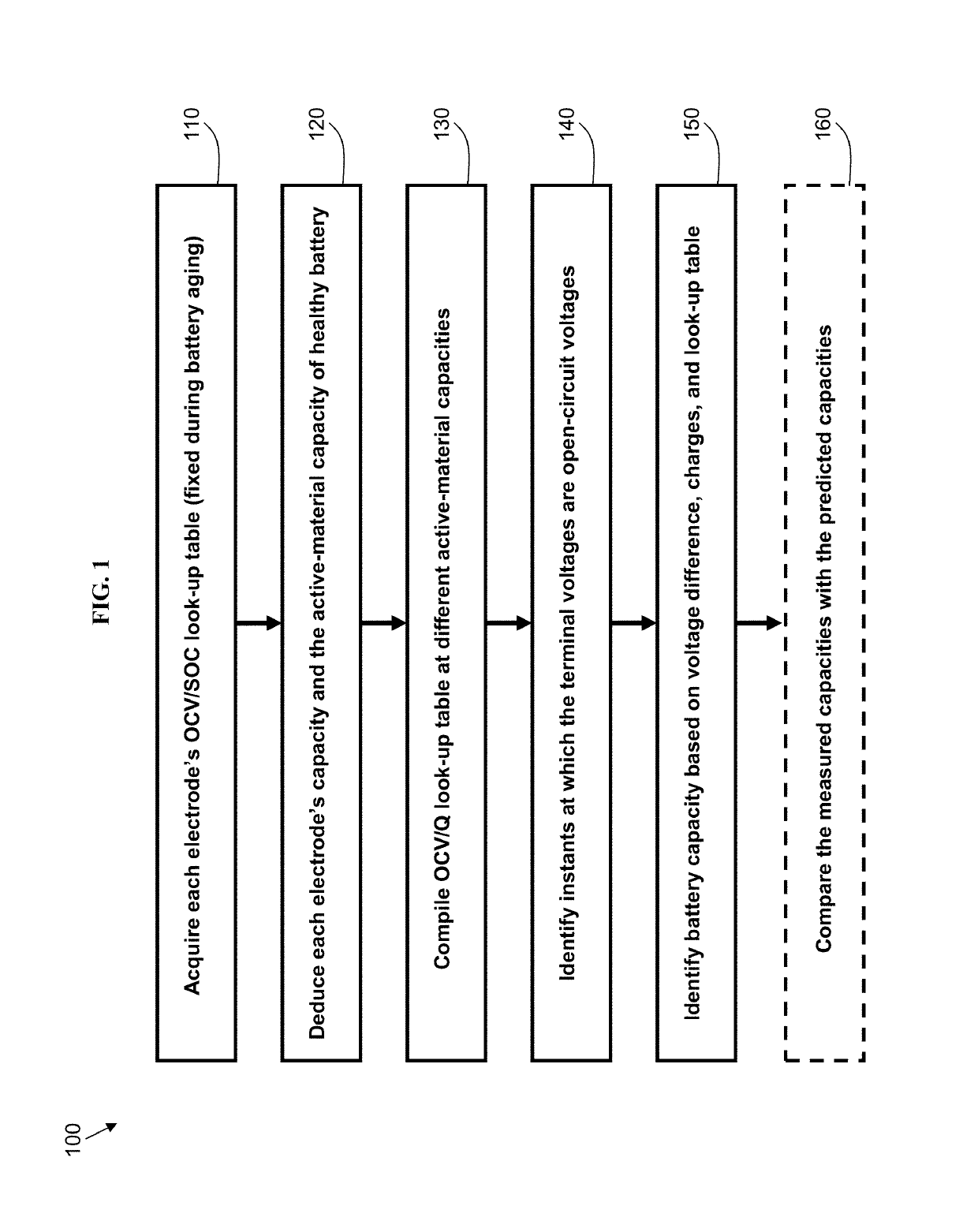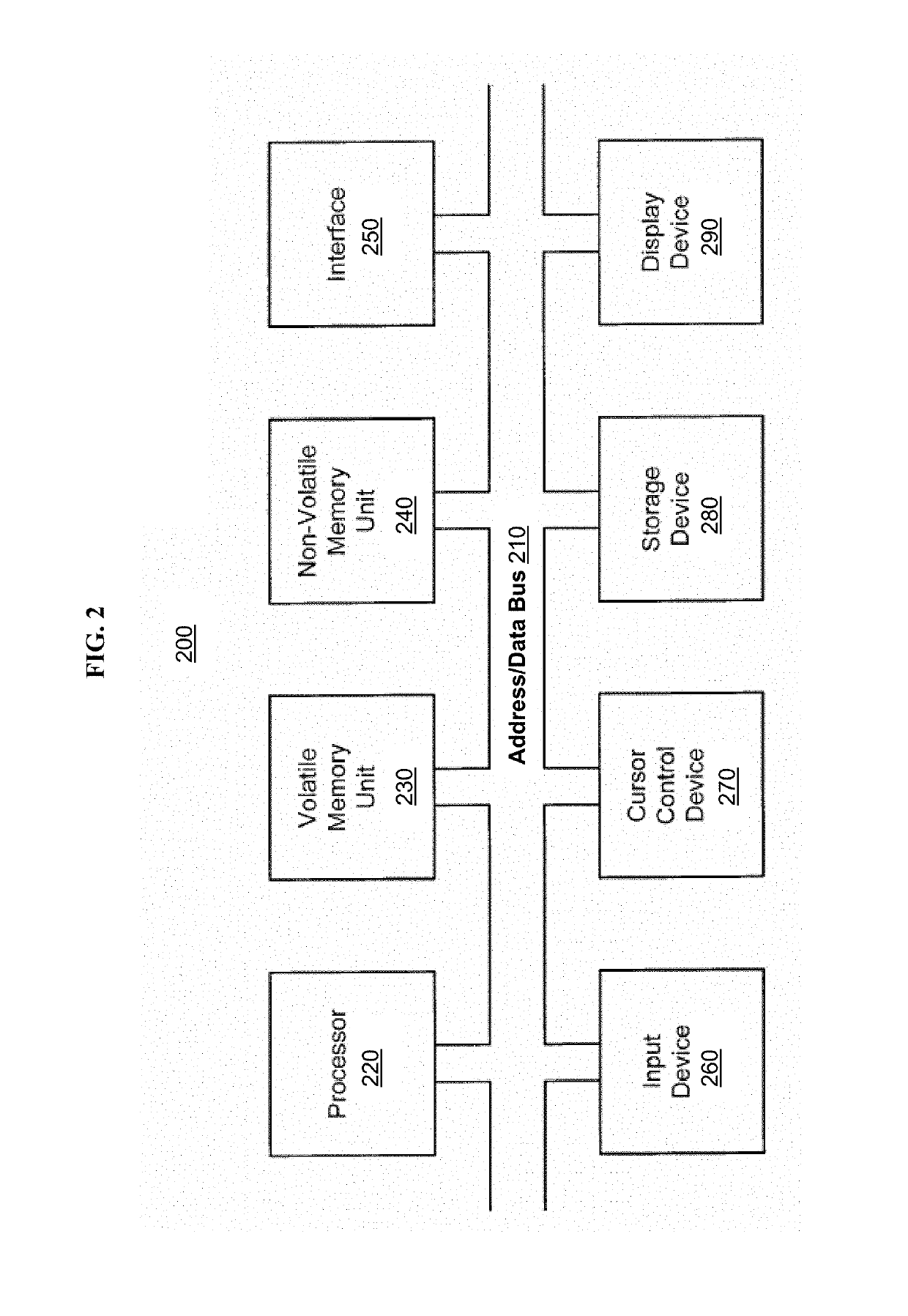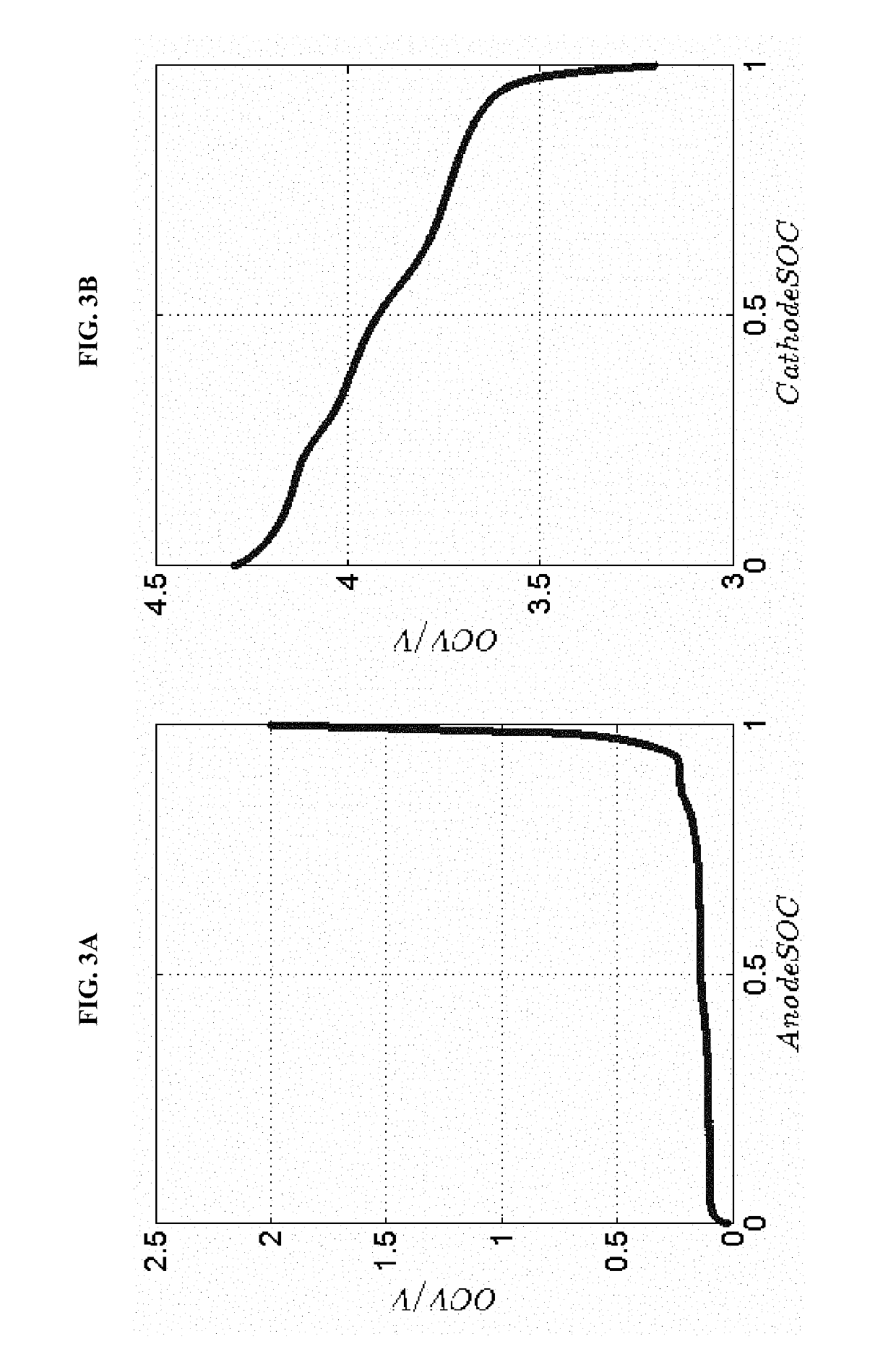Methods for online estimation of battery capacity and state of health
- Summary
- Abstract
- Description
- Claims
- Application Information
AI Technical Summary
Benefits of technology
Problems solved by technology
Method used
Image
Examples
example 1
on of Open-Circuit Voltage with Capacity
[0127]A Sanyo 18650 cylindrical cell is used in this experiment. It is composed of NiCoMn-based composite (LiMn1 / 3Ni1 / 3Co1 / 3+LiMn2O4) positive electrode (cathode) and a graphite negative electrode (anode). At the beginning of life, the battery has a typical capacity of approximately 1.5 Ah.
[0128]It is first desired to compile a look-up table that compiles the full cell open-circuit voltage as a function of capacity. The first step of the procedure involves measuring the OCV as a function of SOC for each electrode using a half cell or a full cell with a reference electrode. In the next step, the capacity of each electrode and the amount of active material (i.e., Li) is determined in the pristine state. This data is used to compile look-up tables for the full cell OCV vs. capacity with different amounts of active material using EQ. 1. Note that these steps in this Example 1 need only be performed once for a given cell chemistry. Once the look-up...
example 2
n of Battery Capacity
[0134]In this example, the look-up tables compiled in Example 1 are used to estimate the battery capacity. This procedure would typically be performed on-board during normal battery operation. As further described below, two instances are identified at which the terminal voltage corresponds to the open circuit voltage (no current flowing). The capacity is determined between these two points; Q can be measured by Coulomb counting or another method. Given two OCVs separated by a known capacity, these points can be compared with the curves (look-up tables) determined in Example 1 to identify the unique OCV vs. Q curve that contains both points. The capacity is simply the amount of active lithium (QLi) that corresponds to that curve.
Identify Those Instants at which the Terminal Voltages are Open Circuit Voltages
[0135]This procedure is conducted and can be implemented for on-line application as the cell has been aged and QLi is unknown. Two instants are identified at...
example 3
n of On-Line Battery Capacity Diagnostics by Comparing Measured Capacities with Predicted Capacities
[0139]In order to evaluate the accuracy and to compare it with other capacity prediction methods, the following experiment is conducted. The capacity of an aged cell (described in Example 1) is measured by discharging it from its maximum voltage to its minimum voltage and integrating the current over this period. This measured capacity value can be used to compare with the predicted value (such as provided by Example 2).
[0140]Several aged cells are evaluated, and the evaluation data are shown in FIG. 11. To compare with the conventional method of capacity prediction (using OCV / SOC LUT), we conduct capacity measurements with the conventional method and plot the results in the same figure. FIG. 11 gives a comparison of the predicted battery capacity with the measured capacity of different aged cells. The circles are based on some embodiments of the present invention, while the squares a...
PUM
 Login to View More
Login to View More Abstract
Description
Claims
Application Information
 Login to View More
Login to View More - R&D Engineer
- R&D Manager
- IP Professional
- Industry Leading Data Capabilities
- Powerful AI technology
- Patent DNA Extraction
Browse by: Latest US Patents, China's latest patents, Technical Efficacy Thesaurus, Application Domain, Technology Topic, Popular Technical Reports.
© 2024 PatSnap. All rights reserved.Legal|Privacy policy|Modern Slavery Act Transparency Statement|Sitemap|About US| Contact US: help@patsnap.com










